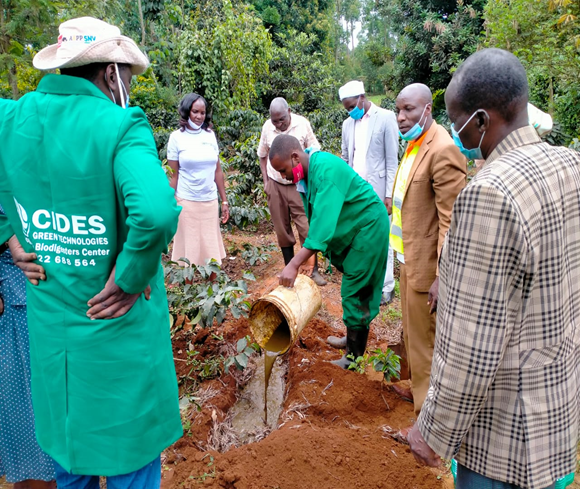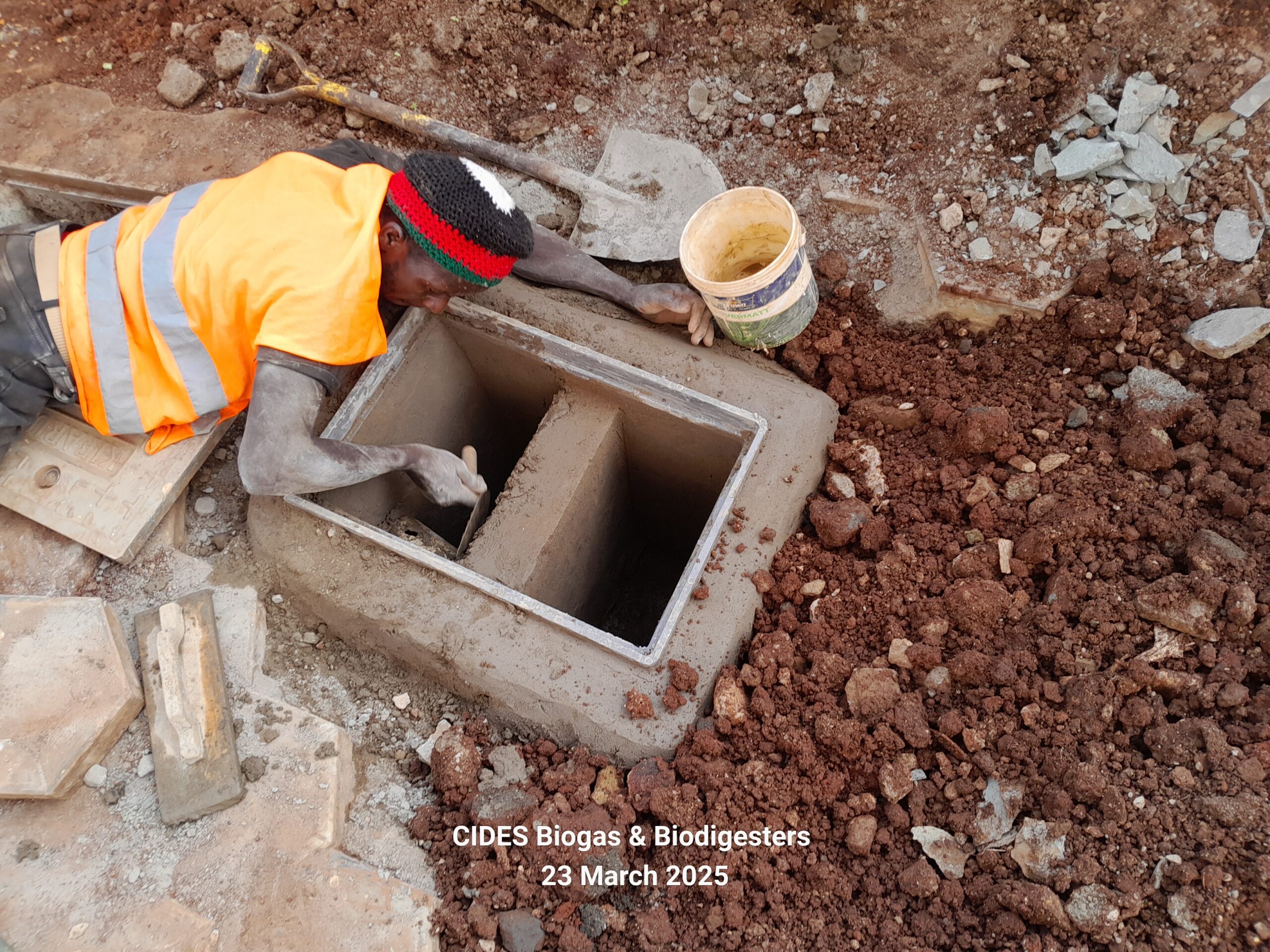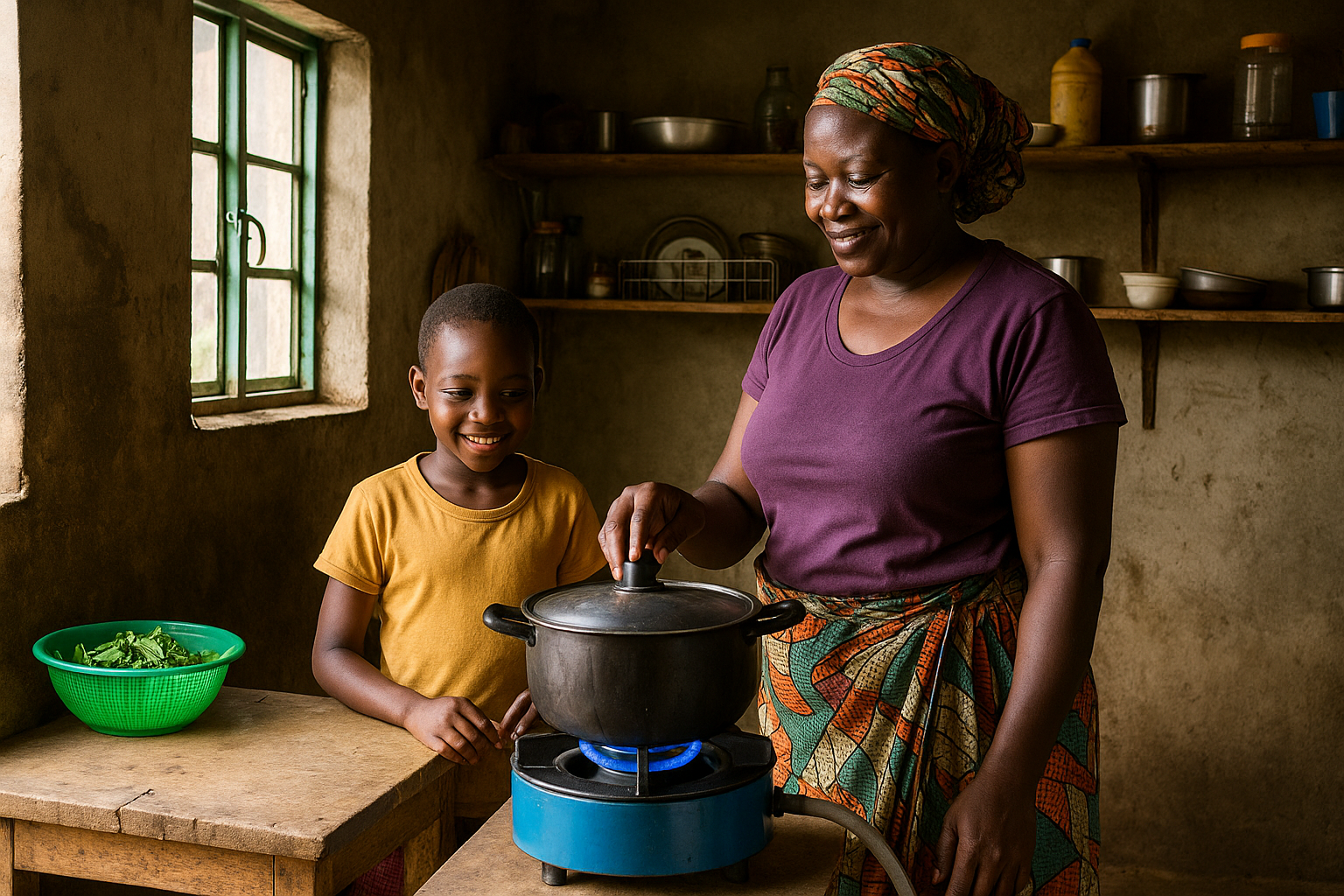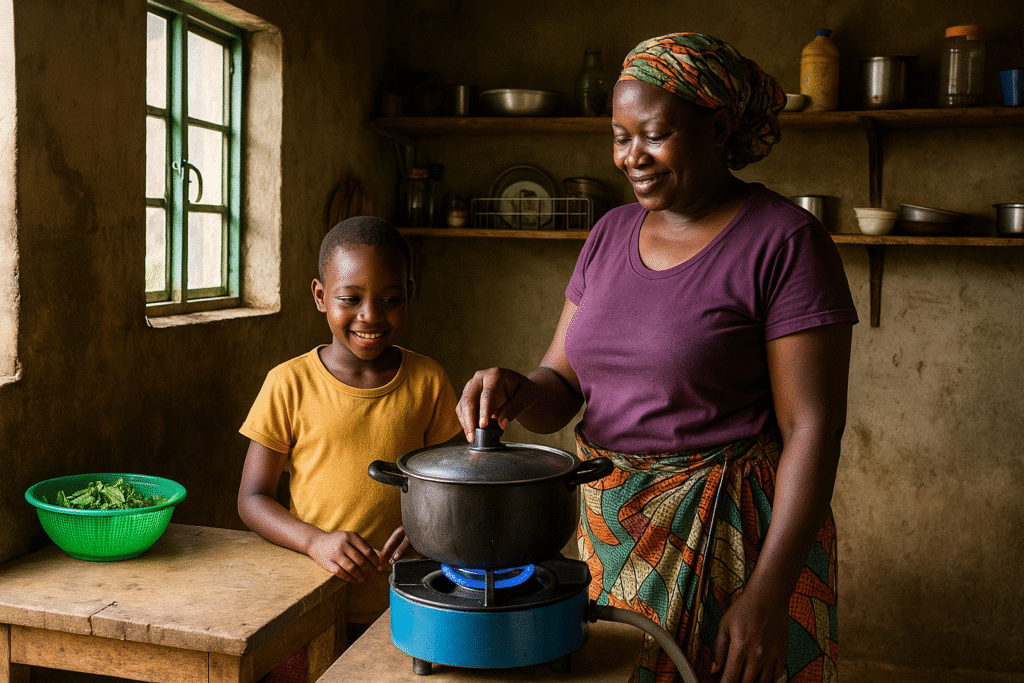In Kitui County, interest in biogas and regenerative farming had been rising, but too often potential was lost for lack of expertise. Systems would be installed, then underutilized; bioslurry would pile up unused; youth had little access to green skills; women didn’t always know how to incorporate sustainable practices in home gardens. Without capacity, technology alone couldn’t deliver.
Biogas digesters poorly maintained, malfunctioning.
Households paying for fertilizers while ignoring that bioslurry could replace them.
Youth unemployment high in rural areas; little opportunity to learn technical green skills.
Women’s agricultural potential under-leveraged in household food security.
Structured, Hands-On Training Program
Responding to demand, CIDESgreen launched a capacity development initiative. Key elements:
Awareness Campaigns: Educating farmers, women, youth about biogas, bioslurry, and regenerative agriculture.
Demonstration Farms: Live digesters, kitchen gardens using bioslurry, field trials to show yield differences.
Technical Training for Artisans: How to build, maintain, repair biogas systems; piping; dome masonry; safety protocols.
Women-Centric Modules: Incorporation of bioslurry in kitchen gardens; nutritional crops; household budgeting with savings from fuel and fertilizer.
Implementation Process
Month 1: Mobilization and community meetings; baseline survey to record households’ energy and fertilizer expenditure, awareness levels.
Month 2–3: Conduct training sessions; spread across several zones in Kitui for accessibility.
Month 4: Apprenticeships and hands-on work; new artisans practice installations in real settings.
Month 5: Follow-up monitoring and support; feedback loops to fix technical issues or usage mistakes.
Results & Measurable Impact
Increased Yields: Farmers switching to bioslurry saw 30–40% higher crop yields, especially in maize/vegetables.
Cost Reductions: Fuel, fertilizer, and chemical input costs dropped substantially.
Job Creation: Dozens of youth certified as biogas artisans; several now earning income by performing installations or repairs.
Women Empowered: Kitchen gardens with organic inputs produced food for household nutrition and surplus for income.
Behavioral Change: Communities developed maintenance culture; gas digesters tended regularly; bioslurry used properly; waste utilized rather than ignored.
There was joy in discovery — when farmers tasted vegetables grown with bioslurry, when youth saw their own hands build a gas dome, when women harvested produce from their gardens. Not invisible benefit, but visible change: healthier bodies, cleaner air, fuller plates, families working with pride.
This program delivers multiplier effects: one trained artisan serves multiple households; one kitchen garden feeds many; savings from inputs go back into community. The model is cost-effective, scalable, and holistically addresses environment + food security + economic growth. It builds local capacity so CIDES’ projects aren’t one-offs but sustained.




